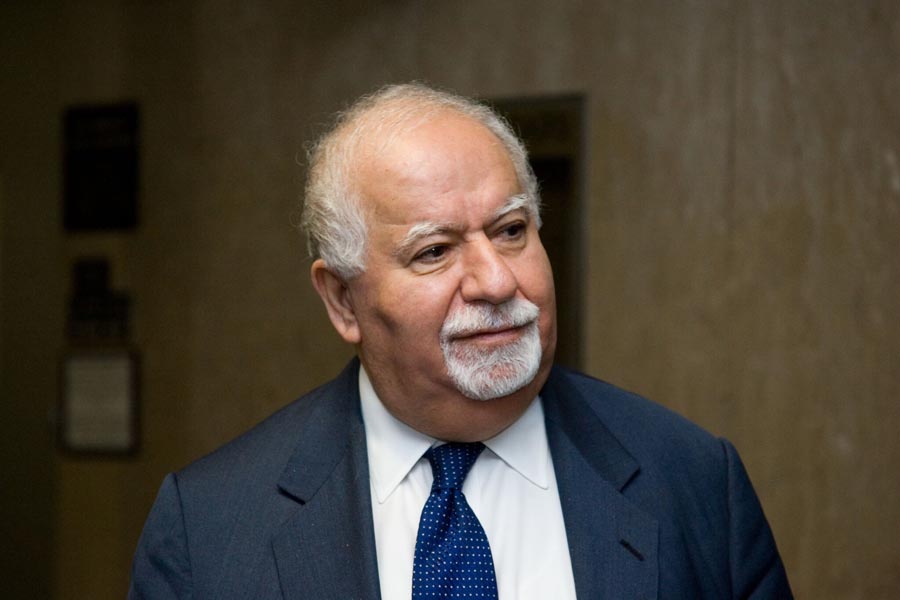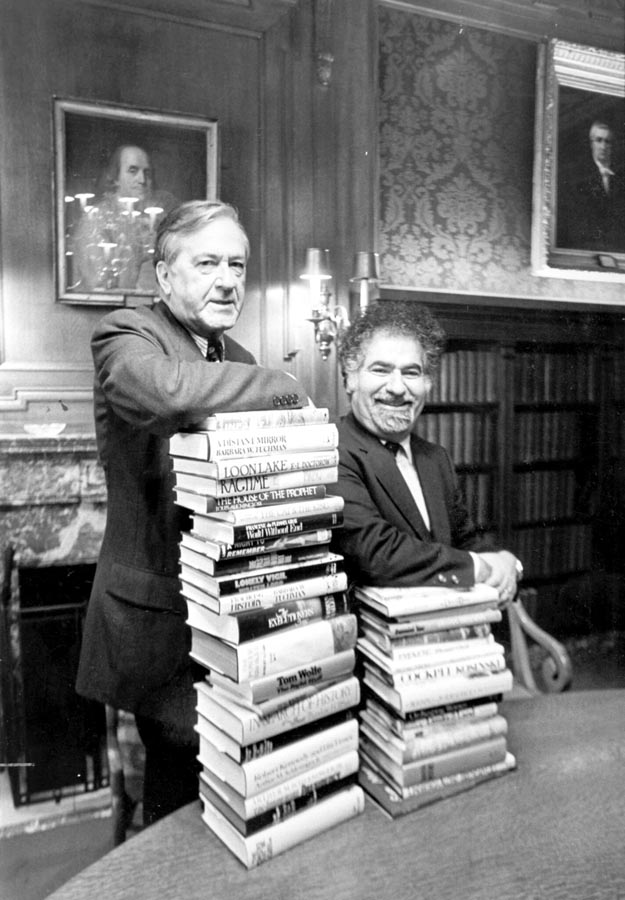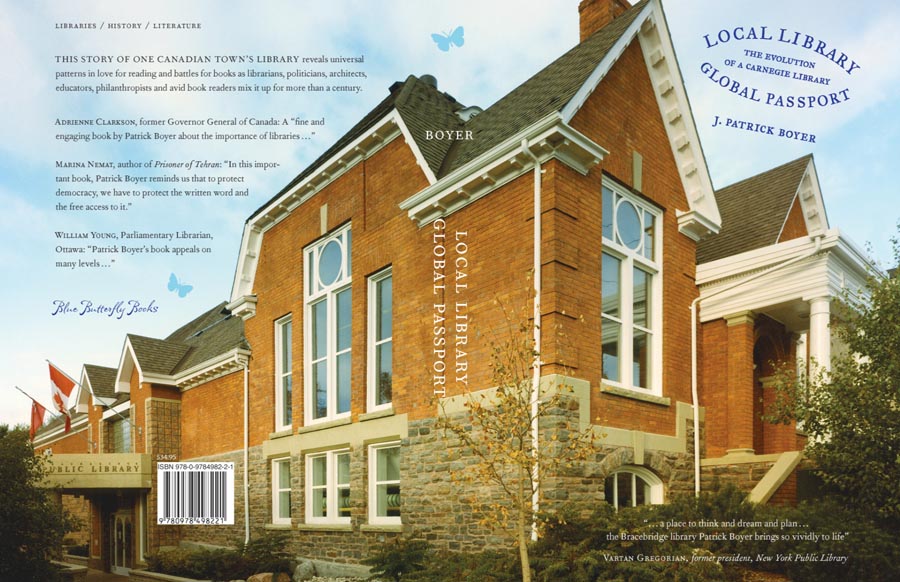In Tribute to Vartan Gregorian, Champion of Books and Libraries
April 23, 2021
 |
|
Vartan Gregorian in 2009. J.M. Martel, New York Times |
To again quote Times obituary writer Robert McFadden, “The Library, with its main research edifice at 42nd Street and Fifth Avenue and 83 branches in Manhattan, the Bronx and Staten Island, was broke, a decaying Dickensian repository of 7.7 million books (the world’s sixth largest collection), many of them rare and valuable, gathering dust and crumbling on 88 linear miles of stacks. The underpaid, overworked staff was demoralized. The beautiful Gottesman Exhibition Hall had been partitioned into cubicles for personnel and accounting. Tarnished chandeliers and lighting fixtures were missing bulbs. In the trustees’ board room, threadbare curtains fell apart at the touch. Outside, the imperious marble lions, Patience and Fortitude, and the portals they guarded, were dirt-streaked. Bryant Park in the back was infested with drug dealers and pimps and unsafe after dark.”
Those were, in fact, symptoms of the deeper crisis: The library operated with a $50 million deficit and lacked political clout. City officials and politicians treated the Library as a frivolous plaything and cut the budget so deeply the main branch was closed Thursdays, with some branches open only eight hours a week. To Dr. Gregorian, that challenge was irresistible.
 |
|
Andrew Heiskell, former Time Inc. chair, and Vartan Gregorian, are all about books in 1981 as they launch an all-out campaign to revive the New York Public Library. W.E. Sauro, New York Times |
The remarkable saga of his campaign that successfully turned everything around, making the New York Public Library a treasure of New York City and of the United States, can be found here: Dr. Gregorian’s obituary in The New York Times.
Continuing the Work of Andrew Carnegie
Then the man who had raised record millions for New York’s library, and record millions more for Brown University, became head of the Carnegie Foundation in New York. Rather than seeking funds from others, Vartan Gregorian was now in charge of one of the world’s most venerable, prestigious, and well-endowed charitable enterprises, started by the world’s richest man, Andrew Carnegie to build libraries for everyone. Carnegie himself has worked his way up from poverty, working as a youth for a pittance in a bobbin factory, declaring that no matter how dreary or long his workday, he got through by knowing a good book awaited him at the end, when he could escape into the Free Republic of Books. As a youth in Pittsburg, he had access to an extensive private library that a wealthy retired colonel made available to working boys like he had once been. In turn, Andrew Carnegie, too, would pay it forward.
Vartan Gregorian’s own devotion to libraries, large and small, had been constant throughout his life. As a 15-year-old, the multilingual youth ran away to Beirut and worked in a library where he also studied. Arriving at Stanford University in California he spent scholarly hours in the library earning degrees in history and humanities. In other libraries he researched and wrote books. Brown University’s library greatly improved during his presidency. And, on the grandest scale of all was the forceful campaign he mounted with almost religious devotion to resuscitate New York’s Library.
Now that Gregorian headed the Carnegie Foundation, which in Andrew Carnegie’s day built public libraries around the world – the largest numbers being in California, Indiana, and Ontario – he relished the opportunity to forge new links for the service of libraries to human society.
Vartan Gregorian and the Bracebridge Public Library
My main contact with Vartan Gregorian came during 2007 when I was researching and writing Local Library, Global Passport / The Evolution of a Carnegie Library. The book, focusing on the quixotic career of library service in the small Ontario town of Bracebridge (as well as Gravenhurst’s unusual brief acquisition of a Carnegie Library, and other Muskoka libraries) was a colourful case study of how major national and international trends in libraries actually work out at ground level in the lives of individuals: the international movement for “free books,” the national and provincial formation of associations for librarians and libraries, the formal education and training of librarians, introduction of the Dewey Decimal system for cataloguing books, how the Carnegie method of philanthropy gave a municipality its beautiful library building conditional on the council providing the land and expressly committing to tax levies to maintain and operate it, and how things worked out with interlibrary loans, open access to the stacks, computerized systems, a satellite library in a prison, library programs for children and adults, and councils that could not understand the cultural and social fabric in which libraries are essential.
Vartan Gregorian and I communicated about these themes, and he read my manuscript. Then on January 29, 2008 in New York City, he wrote this timeless testament to books and libraries, as a Preface to Local Library, Global Passport:
A Portal to the World
by Vartan Gregorian
President, Carnegie Corporation of New York
Libraries have always occupied a central role in our culture. They contain the heritage of humanity, the record of its triumphs and failures, the record of its intellectual, scientific and artistic achievements. They are the diaries of the human race. They contain humanity’s collective memory. They are not repositories of human endeavor alone. They are instruments of civilization. They provide tools for learning, understanding and progress. They are a source of information, a source of knowledge, a source of wisdom, hence they are a source of action. They are a laboratory of human endeavor. They are a window to the future. They are a source of hope. They are a source of self-renewal. They are the symbol of our community with the rest of humanity. They represent the link between the solitary individual and the wider world which is our community.
The library is the university of universities, for it contains the source and the unity of knowledge. It constitutes a commonwealth of learning. It is the portal that one passes through in order to find the wider world.
But it is not only the doors of the biggest or most expansive libraries in great urban centers that provide such portals—any library, no matter how small, offers the same opportunity to enter new worlds. In towns and cities across the globe, somewhere today, someone is about to step into a library and have a life-changing experience, because they are going to enter the world of books. As author Rita Mae Brown succinctly put it, “When I got my library card, that is when my life began.” U.S. Supreme Court Justice Clarence Thomas also found a place to think and dream and plan in a library—a Carnegie library, in fact, no doubt similar to the Bracebridge Library that Patrick Boyer so vividly brings to life in the pages of Local Library, Global Passport.
Not long ago, Justice Thomas came up to me at a conference on the judiciary and handed me his business card; on the back, he had written: “The Carnegie library in Savannah, Georgia, was my sanctuary. It was the library that served blacks, since we were not allowed to go to the Savannah Public Library. It continues to have a very special place in my heart.”
Certainly, times change. Technology has become a predominant force affecting almost every part of our daily doings. It has also speeded up our expectations, linked us to nations and peoples far and wide, and opened the floodgates of information that bombards us twenty-four hours a day, seven days a week—more information than any one person can possibly sort through, much less analyze and process into substantive knowledge. But one thing technology cannot do is replace libraries and books. Books are still cultural icons in our society. They are still among the first gifts that people give to beloved children, that friends and lovers exchange with one another. You can dedicate a book to someone you love but we haven’t reached the point yet where we dedicate floppy disks!
There are 3,222 public libraries in Canada; 116 of them were created by Andrew Carnegie, with grants totaling more than $2.5 million dollars, in a time—the early years of the twentieth century—when that amount was a vast fortune to be spent on almost anything, let alone on building libraries to serve “the common man,” and women, of course, along with children. But Andrew Carnegie understood that books and libraries were exactly what people needed in order to learn, to enrich their education, to expand their dreams and aspirations and, ultimately, help them succeed at whatever they chose to do in life.
I only wish that Andrew Carnegie were around today to see what his legacy has provided to countless people down through the generations, and how his gift of libraries continues to be of incalculable value to those who cherish them.
In telling the story of the Bracebridge Library, Patrick Boyer is actually sharing many stories: he brings us the evolution of Andrew Carnegie’s idea that education is the foundation of civilization, that philanthropy is an investment in the future, and that libraries are one of the strongest building blocks of democracy. As president of Carnegie Corporation of New York, founded by Andrew Carnegie in 1911 to promote the advancement and diffusion of knowledge and education, and as the former president of The New York Public Library, I welcome this volume into the brotherhood of books and of learning that we are all privileged to share.

Copyright © 2023 || Website Development by E-griculture.com
